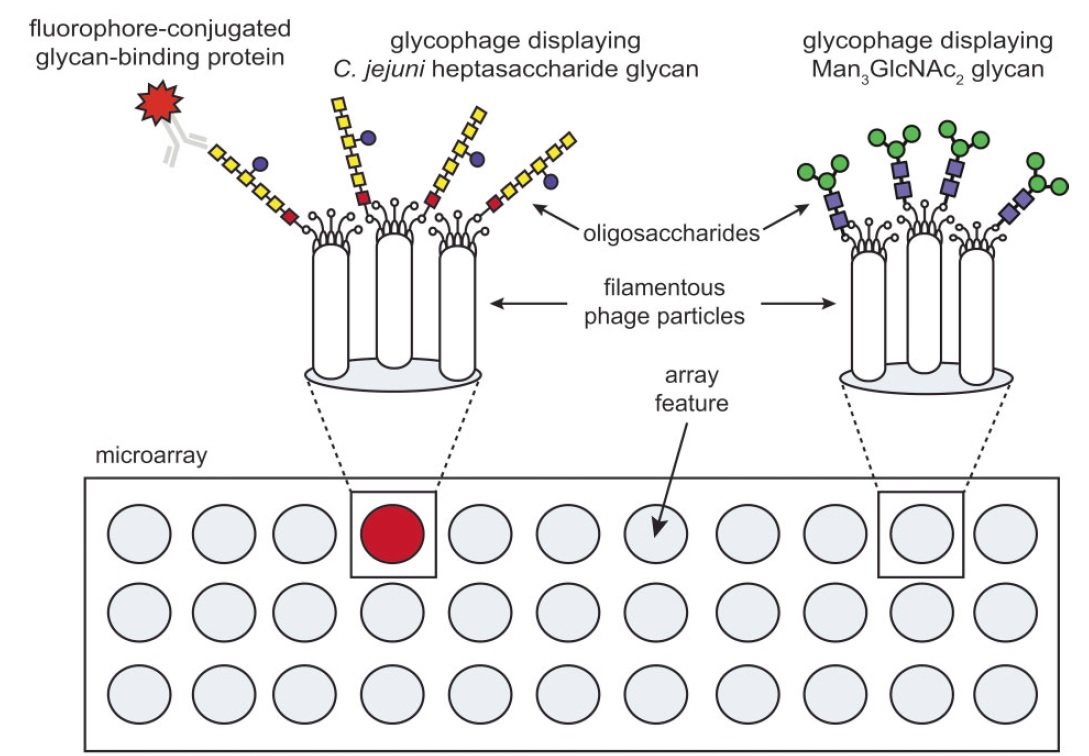GLYCOPHAGEAPP - Development of GlycoPhage Arrays
as a novel high-throughput method for glycomics
(Supported by FP7 Marie Curie, Career Integration Grant, 2012-2016,
FP7-PEOPLE-2012-CIG-322096)
Glycosylation is a widespread post-translational modification and plays important roles in health and disease. Knowledge on glycans and their role in metabolism is much more primitive than that of DNA and proteins.
In fact, the spectrum of all glycan structures, known as the glycome, in some organisms is so large that it exceeds the number of proteins encoded in the genome by orders of magnitude. Traditional analytical tools has not been sufficient
to ‘decode' the complex structural information in glycans. Recently, printed glycan microarrays (glycoarrays) have emerged as powerful, high-throughput tools for screening glycan-protein interactions, and have been developed by different research groups for disease detection, drug discovery, study of immunity and host-pathogen interactions.
However, the full potential of defined glycan microarrays will only be realized by (i) increasing the quantity and diversity of glycan structures and (ii) developing reliable and reproducible chemistries for the immobilization of chemically and structurally diverse glycan probes onto a solid support with retention of functionality.
Within the scope of this project, by deployment of filamentous phage display so that the displayed proteins carry a covalently linked glycan of interest (i.e. using GlycoPhages previously developed by our research group, Çelik et al., 2010) and subsequently patterned in array format, we have introduced (Figure below) a powerful novel technique for facile and scalable production, and purification of glycans compatible with microarray patterning (Çelik et al., 2015)
[See Commentary by Dr. Eric Shusta]. Ultimately, the glycophages were found to possess significantly specific GBP-binding profiles when tested against
negative controls such as synthetic glycans or non-specific glycophages.
Further optimization studies are currently being carried out in our group, to enhance the sensitivity of the technique and increase the array components.

Ref: Çelik et al., 2015, Biotechnology Journal, 10, 1-11.

